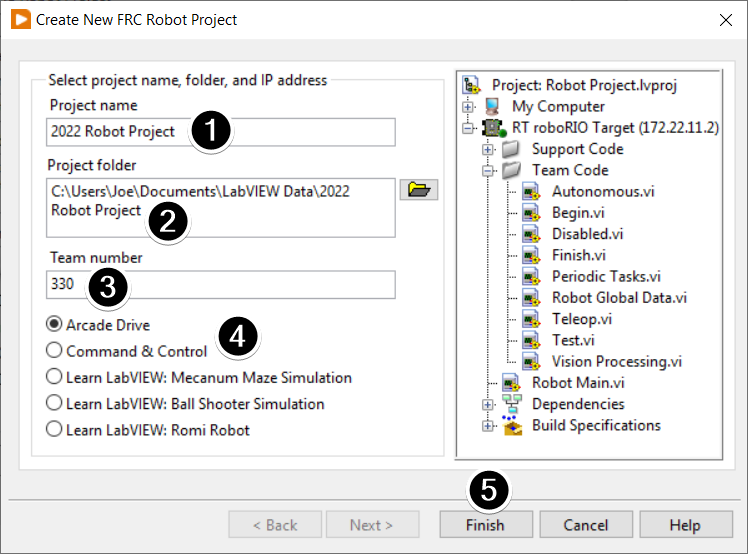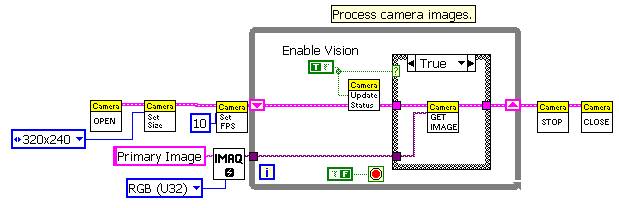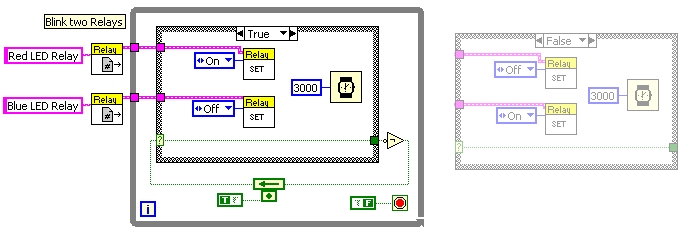

- #FIRST ROBOTICS LABVIEW PROGRAMMING TUTORIAL HOW TO#
- #FIRST ROBOTICS LABVIEW PROGRAMMING TUTORIAL UPDATE#
- #FIRST ROBOTICS LABVIEW PROGRAMMING TUTORIAL CODE#
#FIRST ROBOTICS LABVIEW PROGRAMMING TUTORIAL HOW TO#
To figure out how to properly integrate the concepts into your LabVIEW project. Since they are stand-alone programs it takes some intermediate understanding of the default framework Those sample projects are great for testing if a device is working and wired correctly. LabVIEW also provides stand-alone ready-to-execute examples from the Getting Started Window that include wiring diagrams for connecting devices properly. Each example includes the menu paths to where all the icons used within that image are found. Together where you can see everything in one glance. Because the framework spreads the required elements over several files these examples are in image form to get all the parts Here are examples of ways to do some of the most common robot functions.
#FIRST ROBOTICS LABVIEW PROGRAMMING TUTORIAL CODE#
cRIO).Īn odd side effect of this is that if you drop a library vi onto a blank vi just to drill down to study the internals, then you will probably get the PC version and you'll be studying how the cRIO simulator works, not how the robot version of the code works. The proper version of the library code gets loaded depending on the current Target (PC vs. This introduced two different versions of many of the WPILib vi's, one for executing stand-alone on a PC and another for standard operation on the robot cRIO. Special note on the library vi's: Starting in 2013 the cRIO simulator was added.

#FIRST ROBOTICS LABVIEW PROGRAMMING TUTORIAL UPDATE#
If this tutorial inadvertently leaves some details out, please tell us about it and we will update it.My FIRST LabVIEW Project - a step-by-step how to create and run the default LabVIEW program on your robot.Īnd here are the directions for wiring up your robot control system, so that it is powered to run the default program above: This minor change to the architecture can permit Teleop to complete just a little faster, which can remove the error message, and using a typedef, can save a lot of time during development too.

Notice that the wire in main will not break thanks to the typedef. Giving us the performance boost we were after. This wire allows us to skip the getDevRef for every device every time through the loop. Inside Teleop we can unbundle the DevRefs and use them. We can connect both the control and the indicator to the terminal block, and connect the two in main.vi We can use these names in the Begin.vi block diagram as well - by switching the bundle for a bundle by name - this also bears other advantages like what is demonstrated in the TypeDef tutorialįor now, we copy the indicator from Begin, to Teleop and paste it on the front panel (and switch it to a control). Now, place an indicator on the front panel, here is another place where the TypeDef can be extremely useful, so we’ll take a moment to set one up, notice that we also take this opportunity to rename each element in the cluster to something meaningful (drive joystick, rather than JoystickDevRef)

Initializeīegin by opening the devices in Begin.vi, notice that we even skip setting the refnum, and just bundle everything. We gave our results to the people at NI that work on this, and they said the reason was the DevRef get allocated memory every time and they fixed that for the 2017 season (and presumabley onwards).įor that reason, the following moves from being an optimization to reduce lag to being an optimization for the developer (by not causing him/her to type out a case sensitive name multiple and related less than great development methods). In the summer of 2016, we were able to actually do a performance test on this that showed that the following method significantly outperformed the DevRef get/set method. The following optimization has been used by the teams that we are alumni of and mentors of, and none of the teams have had that error since. After speaking with several teams at regionals, we came up with a solution. When the authors of this website first started programming for FRC, we would get the ‘Robot Drive Not Running Fast Enough’ error frequently. FRC LabVIEW Tutorials - Teleop Background


 0 kommentar(er)
0 kommentar(er)
